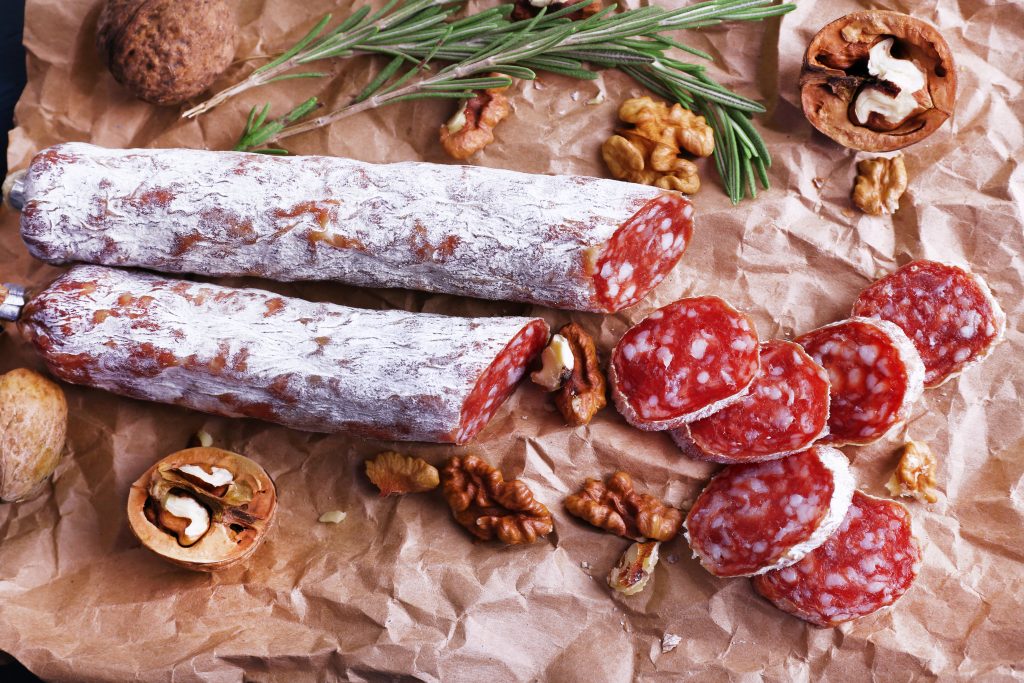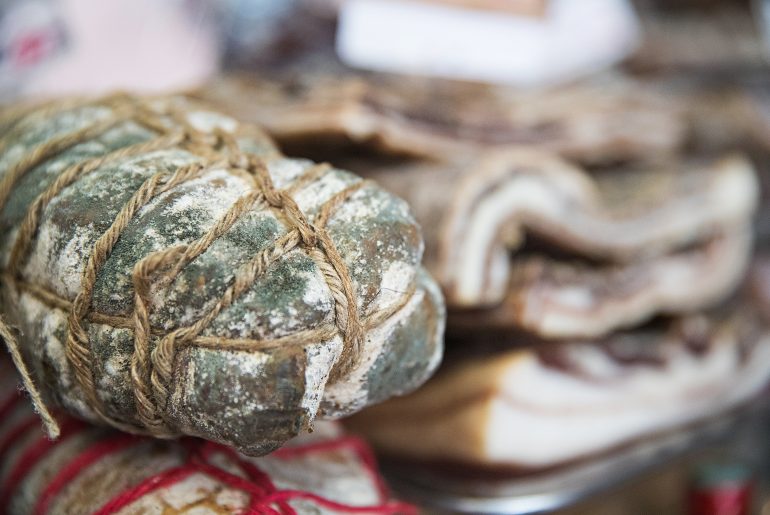Americans waste more than $160 billion in food every year — yikes! Of course, no one buys food with the anticipation of throwing it in the trash, but once something gets moldy, we have little choice. This might be true of most foods — but not all.
According to the USDA, some foods can still be consumed even when mold is visibly present. This handy guide can help you decide if you’re still unsure. Here are 3 foods that don’t need to wind up wasted just because of a little mold:
Moldy foods you can still eat

1. Hard salami and dry-cured country hams
The USDA says that it’s normal for these products to have a layer of surface mold. Think about the white coating around certain salamis — this is actually a benign mold that helps cure the meat and prevent harmful bacteria from growing. Just remove the surface, and these foods are safe to eat.

2. Hard cheese made without mold
Mold cannot penetrate deep enough into some hard cheeses to ruin the whole block. If you spot mold on any hard cheeses such as Asiago, Pecorino, Parmesan, and Cheddar, cut out 1-inch around and below the moldy spot(s), being careful not to let the mold touch the knife. Do this, and your cheese is safe to consume.
See also, How to best store any type of cheese for maximum freshness.

3. Firm fruits and vegetables
They keyword here is “firm.” This describes produce such as cabbage, bell peppers, carrots. Similar to hard cheeses, these foods are too hard for mold to penetrate, so you can be sure that mold spores haven’t spread too deeply to notice. Cut off at least 1-inch around and below the mold spot(s), being careful not to cut through the mold with your knife.
Preventing mold
There are things you can do to help prevent mold in the first place:
- When serving food, keep it covered to prevent exposing it to mold spores in the air.
- Use plastic wrap to cover foods you want to stay fresh and moist like fresh cut fruits and veggies.
- Don’t leave perishables out of the refrigerator for more than two hours.
- The best thing you can do is eat leftovers, and most foods, within 3 to 4 days of purchase so mold doesn’t have the chance to grow. It may mean making several smaller trips to the grocery store, but you’ll be eating fresher and saving money in the long run.
Also see, This is why you can’t eat moldy bread.




